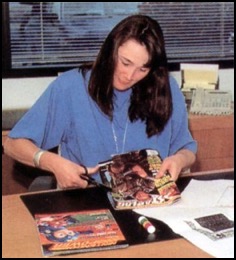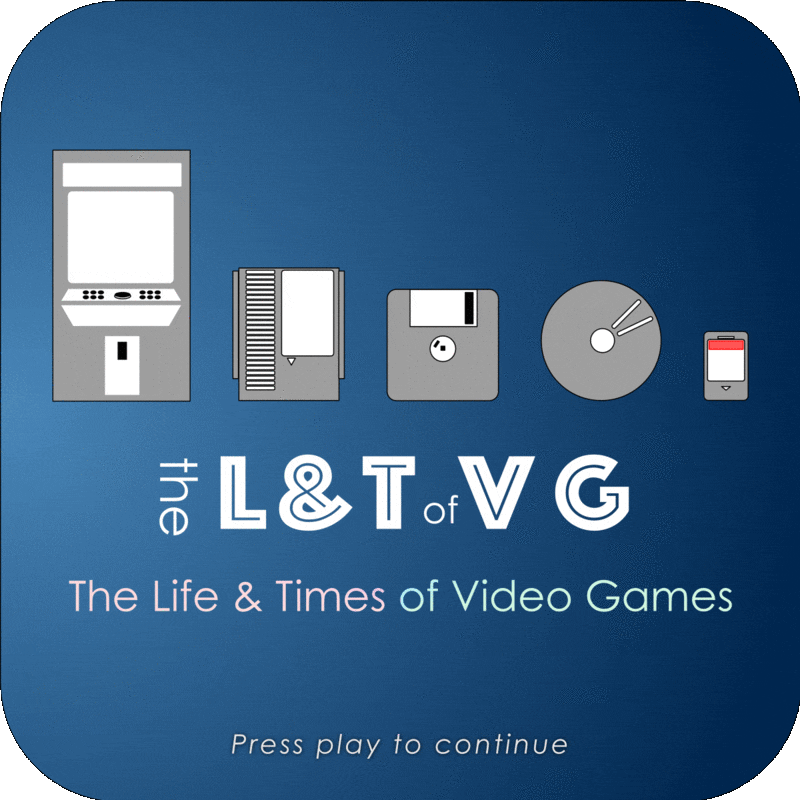Soundbite: Gail Tilden on working at Nintendo of America in its early years
16 Mar 2020 — Filed in: Soundbites
Become a Patron!
Nintendo Power founding editor and former Nintendo of America marketing executive Gail Tilden remembers her beginnings at the company — before the NES, before Nintendo Power, and even before desktop publishing.
This interview was conducted for an article about the launch of the Game Boy, Tetris, and Pokemon in the West — which you can find at https://www.polygon.com/2019/4/19/18295061/game-boy-history-timeline-tetris-pokemon-nintendo
To get access to supporter-only soundbites, and early access to soundbites like this one, you can subscribe via Patreon — where anybody donating $3 or more per month also gets ad-free high-bitrate downloads of every episode plus various other bonuses. Learn more at lifeandtimes.games/donate
TRANSCRIPT
This is a Life and Times of Video Games soundbite. I'm Richard Moss.
And what you're about to hear is one such example, from my interview with Nintendo Power founding editor Gail Tilden for a Polygon feature last year where I recounted the Game Boy's launch in the West, as seen by the marketing folks at Nintendo of America, and the launch of its two biggest games, Tetris and Pokemon.
I'll have a link to the article in the show notes, but for now I hope you enjoy this little slice of life from mid-1980s Nintendo of America.
Gail Tilden: You know, I had gotten into marketing while working at Britannia Sportswear, which was a large — the first fashion jeans company {laughs) in Seattle. And my boss had gone over to Nintendo and she recruited me there. So she said that she was working in, 'Have you ever heard of Donkey Kong? I'm working for the Donkey Kong company, and I want you to come over. And she was like, I'm going to be going on maternity leave and I've just got to get someone in here as soon as I can. Cause I'm going to be gone for a few months. And anyway, so that's how it happened.
Richard Moss: And what was Nintendo of America like in those days?
Gail Tilden: Well, it was a very small company. And also I guess I was very excited to think that a Japanese company in video games would be extremely high tech and that we would all have — you know, they'd have all these computers. And really they had like an Apple IIe in the closet or something for billing or arcade games. It wasn't high tech at all. But yeah, it was very, very small. They were doing a lot of manufacturing, actually, at Nintendo in terms of assembly into the cabinets.***
And you know, we had a few people in marketing and a few people in accounting, but the lowest head count I think while I was there was in around 1984. I think we had 35 people. And I think that had dropped a little bit because the arcade game market had peaked somewhat. And then, you know, I think everybody kind of pitched in and did everything because we had so few staff that you would be able to — you know, if you're working on marketing and I can remember being at some kind of trade show and you're blowing up balloons. Well of course you're blowing them up yourself because it's not like we had 10 assistants to do everything.
So, you know, people pitched in and kind of a lot of cross pollination. Then we also — it was very interesting because there were only a few people that spoke Japanese or it came from Japan. And without any internet or, you know, really even something like FedEx would have been very new. We had DHL, but there were a few faxes going back and forth. But most things had to take a couple days to communicate between Japan and the US, or in the evening the very few Japanese staff would relay the communication by phone and then, you know, provide information or direction from there. So like, we were also working on Game & Watch games and some what was called Tabletop — little teeny mini arcade games that were like toys. And just, even anything like doing an instruction manual or changing any language on the screen, that kind of thing, was a very cumbersome path to communicate between Japan and the US. So the markets — and as we evolved, and Nintendo also had products in Europe that Nintendo of America was responsible for at the time.
You know, it was very segregated markets. You didn't have to worry that the consumer would know exactly what was happening in one market and say, oh, how come we're not getting that here? You could manage those things very separately. And that is also something that's quite different from today. And even imagine that the technology of when you're doing marketing, there was no such thing as what we later called desktop publishing. There wasn't something where you could just take a computer and make a graphic file and print a print ad or, you know, make a magazine or that kind of thing. Everything was done in an extremely low tech kind of a manual process where you would have to fit things together with actual film. And it's hard to explain that to people today, what it means to have to make film and something called color separations. And scanning every single image by these huge scanners in order to create the printing film.
People actually just used exacto knife and, you know, created what would eventually be a magazine spread, for example. So it was just was a very different time and the acceleration in the 90s into both the online world and the ability to use tools like Macs to make, you know, computer generated layouts and to make changes on the fly, was really like a very, very major shift in how you could accomplish marketing tasks.
For more soundbites like this, you can head to my website at lifeandtimes.games and click on Soundbites — or better yet, to get access to some extra subscriber-only soundbites and other bonus material, support me on patreon via lifeandtimes.games/donate.
Until next time, my name is Richard Moss. Thanks for listening.


